Introduction
For business owners, safeguarding innovations and creative works is crucial to maintaining a competitive edge. Intellectual property (IP) law offers robust protection for intangible assets, including copyrights, patents, trademarks, and trade secrets. Among these, copyrights specifically protect original artistic and literary creations, which are often valuable business assets. This article clarifies the relationship between intellectual property and copyrights, showing how copyrights operate within the broader IP framework. Each chapter reveals essential insights: first, an overview of intellectual property and copyrights; second, the distinct role that copyrights play; third, the key IP components related to copyrights; fourth, legal protections pertinent to copyrights; and finally, a comparative analysis of copyright protection with other IP categories. Together, these chapters equip business owners with a comprehensive understanding to better manage and protect their creative and innovative assets.
Tables of Contents
Chapter 1: Intellectual Property and its Relationship to Copyrights: An Overview
- Navigating the Technological Advances and Legal Frameworks Defining Intellectual Property and Copyrights
- The Power of Intellectual Property and Copyrights in Driving Economic Growth and Cultural Innovation
Chapter 2: The Role of Copyrights within the Framework of Intellectual Property
- Navigating Digital Frontiers: How Copyrights Evolve with DRM, AI, and Emerging Legal Frameworks
- Economic Influence of Copyrights: Driving Value, Market Evolution, and Creative Industry Expansion
Chapter 3: Key Components of Intellectual Property Related to Copyrights
- Understanding Originality, Ownership, and Exclusive Rights Within Copyright Protection
- Navigating the Legal Landscape: Rights, Limitations, and Licensing in Copyright Law
Chapter 4: Legal Protections and Rights under Intellectual Property Related to Copyrights
- Defining Copyright’s Boundaries and Exclusive Legal Powers within Intellectual Property Law
- Balancing Exclusive Rights with Public Interests: Limitations and Exceptions in Copyright Law
Chapter 5: Comparative Analysis: Intellectual Property Related to Copyrights and Other IP Categories
- Navigating Technological Innovations and Economic Impact Across Copyrights and Other Intellectual Property Rights
- Global Dynamics and Societal Impact: How Intellectual Property Shapes and Challenges Copyrights and Other IP Rights
Chapter 1: Intellectual Property and its Relationship to Copyrights: An Overview
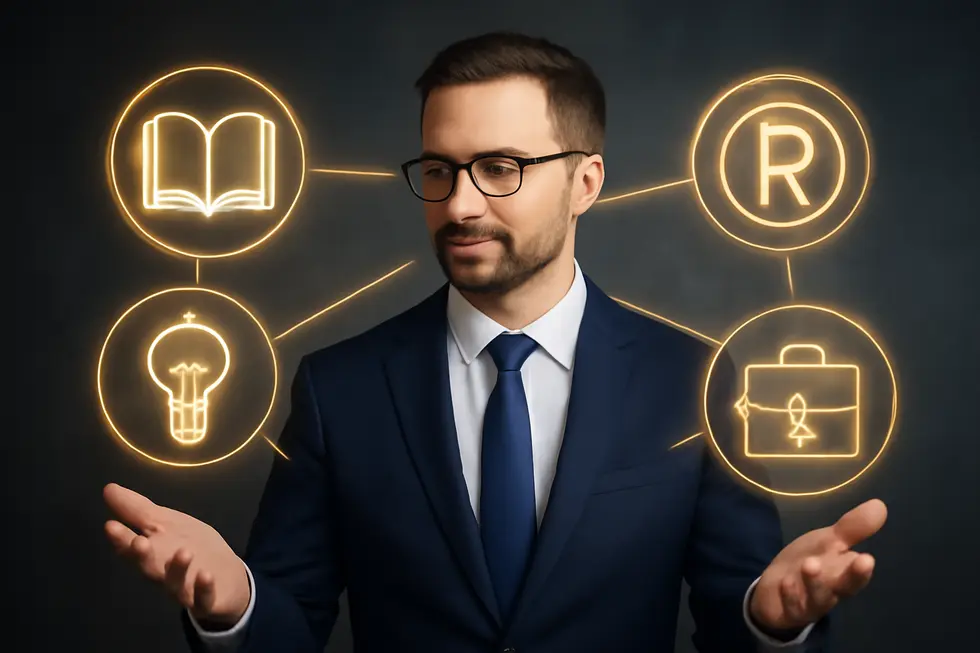
1. Navigating the Technological Advances and Legal Frameworks Defining Intellectual Property and Copyrights
The relationship between intellectual property (IP) and copyrights unfolds at a complex intersection of rapid technological progress and established legal principles. Intellectual property law serves as the backbone that legally protects creations of the mind—including inventions, symbols, designs, and artistic works—while technology continuously redefines the scope and enforcement of these protections. Within this framework, copyrights form a vital subset, safeguarding original works of authorship fixed in tangible media and granting creators exclusive rights such as reproduction, distribution, and adaptation.
Technological innovations, particularly developments in artificial intelligence (AI), are challenging traditional IP paradigms. Since copyright and patent laws typically require a human originator, AI-generated creations raise difficult questions about ownership and protection, stirring debates around whether machines can be legally recognized as authors or inventors. This legal ambiguity calls for adaptation as courts and policymakers consider how rights apply to works produced with or by AI.
Digital technology also influences how intellectual property is created and disseminated, introducing new formats like 3D design files that receive copyright protection upon creation. Unauthorized use, such as downloading or printing protected digital assets, may constitute infringement, pressing the need for clearer rules tailored to digital environments. Licensing models like Creative Commons illustrate evolving mechanisms allowing creators to share works flexibly while preserving certain rights.
Legally, intellectual property encompasses copyrights, patents, trademarks, and trade secrets, each targeting different types of intellectual assets. Copyrights specifically protect original expressions fixed in tangible form but do not extend to ideas or concepts themselves, emphasizing the importance of expression in safeguarding creative content. Registration enhances enforcement capabilities, supporting creators in defending their rights.
Underlying intellectual property law are philosophical foundations—utilitarianism encouraging innovation by incentivizing creators, and natural rights theory advocating moral ownership of intellectual labor—both shaping laws that balance creator interests with public benefit.
As technologies evolve, the legal landscape must continue adapting to maintain the delicate balance between protecting creators and fostering innovation. For more detailed insight into copyright protections relevant to various creative works, see the comprehensive discussion on copyright information for books.
2. The Power of Intellectual Property and Copyrights in Driving Economic Growth and Cultural Innovation
The economic and cultural significance of intellectual property (IP), particularly copyrights, extends far beyond legal frameworks. Intellectual property forms the foundation for incentivizing creativity, innovation, and commercial development across diverse industries. Copyrights, as a specialized category of IP, protect original literary, artistic, and digital works, granting creators exclusive rights to reproduce, distribute, and adapt their creations. This exclusivity not only secures the financial rewards for authors, musicians, filmmakers, and software developers but also encourages continued cultural development and diversity.
From an economic perspective, IP protections are crucial for fostering research and development investments. Businesses and inventors rely on these rights to safeguard their innovations, maintain market share, and attract funding. Strong copyright laws enable industries like entertainment, software, pharmaceuticals, and biotechnology to recover substantial development costs and promote technological advancement. Moreover, effective IP systems help developing economies by establishing legal certainty that attracts foreign investment and nurtures local inventors and creators.
Societally, copyrights contribute to preserving cultural richness while ensuring creators benefit from their intellectual labor. They support a thriving environment where new ideas and art flourish and reach wider audiences. However, challenges arise from ethical issues, including monopolistic pricing of patented drugs and the protection of indigenous knowledge. The digital era further complicates enforcement, as easy copying and distribution of content strain creators’ abilities to control and monetize their works.
Balancing these economic incentives and societal interests requires continually evolving copyright policies that adapt to technological changes and uphold fairness. Copyrights operate as a critical subset of intellectual property, sustaining innovation, cultural expression, and economic vitality in a globalized world.
For a detailed exploration of economic and ethical aspects of intellectual property and copyrights, consult copyright definition economics business.
Chapter 2: The Role of Copyrights within the Framework of Intellectual Property
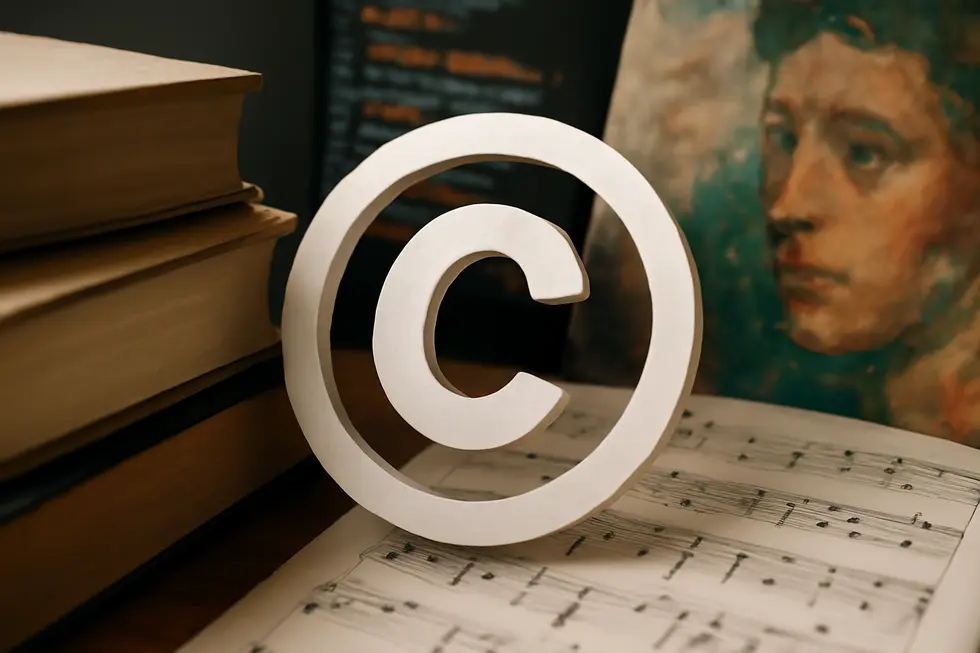
1. Navigating Digital Frontiers: How Copyrights Evolve with DRM, AI, and Emerging Legal Frameworks
The integration of technology into the realm of intellectual property has transformed how copyrights are protected and enforced. Central to this evolution is Digital Rights Management (DRM), a suite of technologies that act as guardians over digital content. DRM systems control access, usage, and distribution of creative works in real-time, preventing unauthorized copying or sharing. They serve as a critical complement to traditional copyright law, providing creators and distributors tools to maintain content integrity and develop flexible monetization strategies in an age where digital reproduction is effortless.
Concurrently, the rise of Artificial Intelligence (AI) challenges foundational notions of authorship and copyright ownership. Since many AI-generated works lack direct human authorship, current copyright frameworks, especially in the United States, do not extend protection to such creations. This introduces complex legal questions about originality and ownership, further complicated by the data that trains AI models—often consisting of vast copyrighted materials. The risk of unauthorized use during training has provoked debates and legislative efforts, particularly in jurisdictions like the UK and European Union, to develop clearer regulations balancing innovation with the rights of original creators. The evolving legal landscape anticipates significant court cases and regulatory measures addressing these tensions.
Innovative solutions now combine DRM with AI to streamline rights management across complex digital ecosystems. By automating identification of content ownership and tracking licensing compliance, such technologies help reduce legal risks while supporting creators and businesses in protecting their intellectual property effectively.
Overall, the modern copyright framework must reconcile technological advances with legal protections. DRM enforces usage rights and curbs piracy, AI challenges traditional authorship concepts, and new laws strive to protect creative industries amid rapid innovation. Together, they compose a dynamic ecosystem aimed at preserving intellectual property rights in an ever-changing digital frontier.
For a deeper understanding of how copyright intersects with business and creative ownership, see this detailed resource on copyright information for books and creative works.
2. Economic Influence of Copyrights: Driving Value, Market Evolution, and Creative Industry Expansion
Copyrights serve as fundamental drivers of economic value and industry growth within the broader intellectual property (IP) framework. By granting creators exclusive rights over their original works—ranging from books and music to software and films—copyrights create a legal foundation for monetizing creativity. This exclusivity allows creators and businesses to generate revenue not only through direct sales but also via licensing, adaptation, and distribution across various platforms. The resulting intangible assets substantially enhance firm worth and foster consumer engagement, underpinning the economic significance of copyright-protected content.
In economies like the United States, copyright-reliant industries contribute markedly to gross domestic product and employment levels, reflecting their critical role in national and global markets. IP-intensive sectors, dominated by creative and cultural industries, fuel innovation-led competitiveness by capturing a significant share of economic output. Licensing agreements enabled by copyrights facilitate wider market penetration and diversified revenue streams, while preserving ownership and brand integrity. This dynamic ecosystem encourages continuous reinvestment in creative development, bolstering both market presence and the intellectual property’s commercial lifespan.
However, challenges such as copyright infringement introduce complex economic considerations. Unauthorized use of creative works can undermine revenues, particularly in sectors like film and music, though some industries adapt by leveraging digital strategies to convert unauthorized consumption into paying audiences. Despite these hurdles, strong copyright enforcement remains essential to maintaining incentives for innovation and creativity.
Ultimately, copyrights stimulate the expansion of knowledge and creative economies by protecting investments, promoting innovation, and enabling global distribution of intellectual assets. They anchor a modern economic structure where intangible property drives growth, competitiveness, and sustainable industry development.
For those looking to deepen their understanding of how copyrights function as key economic components within intellectual property, resources such as copyright definition and economics for business provide useful insights.
Chapter 3: Key Components of Intellectual Property Related to Copyrights
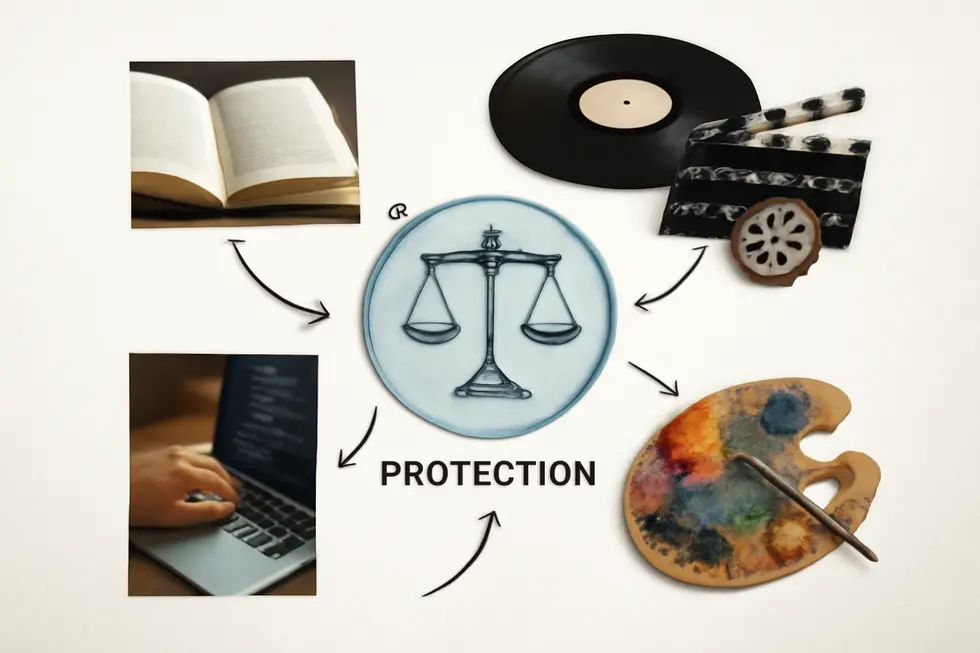
1. Understanding Originality, Ownership, and Exclusive Rights Within Copyright Protection
At the core of copyright law lie the intertwined principles of originality, ownership, and exclusive rights, each essential for safeguarding creative expression within the broad framework of intellectual property. Originality requires that a work must be independently created by the author, reflecting a minimal degree of creativity and personal effort. It ensures that copyright protects the unique manner in which ideas are expressed, rather than the ideas themselves, maintaining a boundary between unprotected concepts and protected artistic or literary manifestations.
Ownership of copyright generally vests in the creator of the work, granting them authoritative control over its use. However, ownership is not fixed exclusively to the creator. It may also transfer to heirs, employers under “work made for hire” arrangements, or other entities through legal agreements. This dynamic clarifies who holds the right to authorize or restrict the work’s utilization, facilitating the management and enforcement of copyright in various contexts.
Exclusive rights granted under copyright law empower the owner with sole authority to reproduce, distribute, publicly display or perform, and adapt the original work into derivative creations. These rights enable creators to control commercial exploitation, prevent unauthorized use, and enter licensing agreements that provide economic benefit. Notably, copyright protection arises automatically upon fixation of the original work in any tangible medium, without formal registration, although registration can bolster legal enforcement capabilities.
These legal components collectively foster an environment that incentivizes innovation by securing creators’ interests in their intellectual efforts. The limited duration of copyright, typically lasting the life of the author plus 70 years, balances private control with eventual public access, after which works enter the public domain. This structure preserves the ongoing cycle of creativity and cultural enrichment.
For a more detailed discussion on copyright principles and their practical implications, refer to the comprehensive resource on copyright information for books.
2. Navigating the Legal Landscape: Rights, Limitations, and Licensing in Copyright Law
Copyright protection functions within a complex legal framework that balances the rights of creators with the public’s interest in access and fair use. Once an original work is fixed in a tangible form, the creator automatically holds exclusive rights to reproduce, distribute, publicly display, perform, and develop derivative works. These rights empower creators to control how their literary, artistic, musical, or scholarly creations are used and monetized. Yet, these rights are not absolute; the law incorporates safeguards to ensure fair use and lawful access.
Central to this framework are copyright license agreements, which enable copyright holders to grant permission to others under negotiated terms. These contracts clearly specify who may use the work, the geographic scope, duration, financial compensation, and any restrictions imposed. Licenses can range from exclusive arrangements to broader, non-exclusive uses. Open licenses, like Creative Commons, further facilitate sharing while respecting the creator’s rights. Understanding the nuances of these licenses is essential for both licensors and licensees to avoid infringement and ensure compliance.
Equally important are the statutory limitations built into copyright law. The doctrine of fair use permits limited use of copyrighted materials without explicit consent for purposes such as education, critique, research, or news reporting. Courts assess fair use by examining the purpose, nature, amount used, and potential market effect. This balance fosters creativity and innovation, allowing society to benefit from copyrighted works without undermining the creator’s rights.
Additionally, copyright terms define how long protection lasts, after which works may enter the public domain. Licensing agreements also outline conditions for early termination, protecting parties if contractual obligations are unmet. Legal professionals specializing in copyright help navigate these complexities, defending rights while facilitating lawful use.
Together, these components create a balanced legal ecosystem that safeguards creators’ interests and enables legitimate use, shining a light on the intricate relationship between intellectual property and copyright. For a detailed exploration of how copyright interacts with public domain concepts, you can refer to insightful resources on copyright law and public domain.
Chapter 4: Legal Protections and Rights under Intellectual Property Related to Copyrights
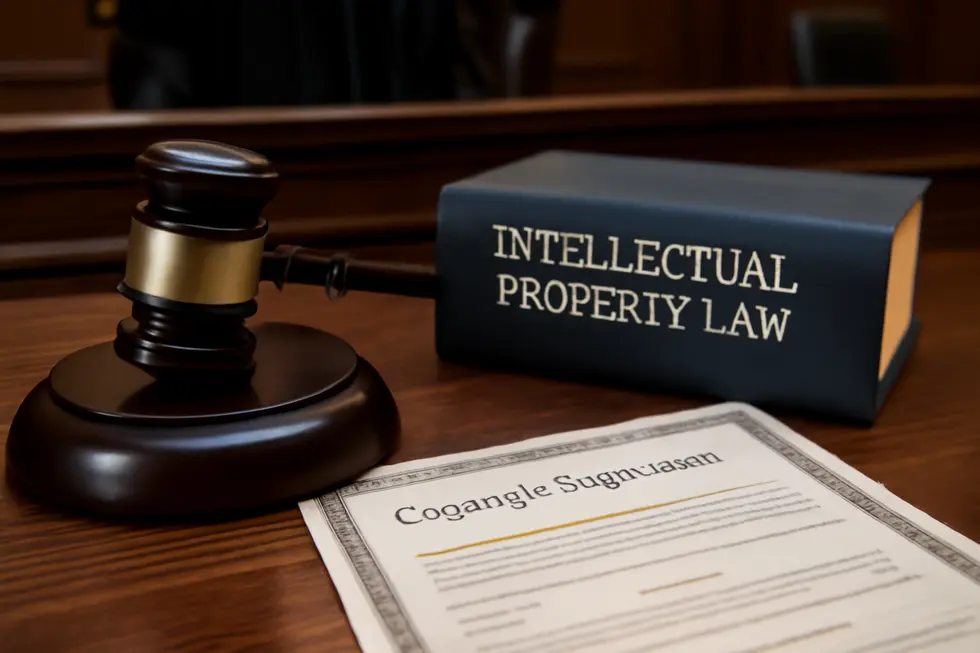
1. Defining Copyright’s Boundaries and Exclusive Legal Powers within Intellectual Property Law
Copyright law serves as a fundamental pillar of intellectual property (IP) protection, granting creators control over their original works of authorship. This legal framework ensures that once a work is fixed in a tangible form—be it a book, musical composition, film, or artwork—the creator automatically holds exclusive rights to govern its usage. Rooted primarily in Section 106 of the U.S. Copyright Act of 1976, these rights enable creators to reproduce, adapt, distribute, publicly perform, and display their work, establishing a comprehensive scope of protection that safeguards their creative expression.
The scope of copyright covers the specific expression of ideas rather than the underlying ideas or methods themselves. This distinction protects the originality embedded in a work’s fixed form without restricting the free flow of ideas, concepts, or techniques. For example, while a novel’s narrative and wording are protected, the general plot idea or theme is not. This balance encourages creativity while respecting the public domain.
Exclusive rights granted to copyright holders include the reproduction right, allowing copies of the work to be made; the right to create derivative works such as adaptations or translations; the distribution right to control public sales or transfers; as well as rights to public performance and display, which cover music, films, plays, and exhibitions. Special provisions also extend to digital performances, particularly for sound recordings, reflecting evolving media landscapes.
Beyond ownership, copyright holders may license their rights through exclusive or non-exclusive agreements, thereby permitting others to use their works under defined conditions. These licenses can specify terms of use, duration, and territorial scope, facilitating lawful exploitation of works while safeguarding creators’ interests. Copyrights themselves are transferable property rights, meaning they can be sold, assigned, or inherited, just like physical property.
Despite these protections, copyright law incorporates important limitations such as the fair use doctrine, which allows for limited use in criticism, teaching, or research without permission. The first sale doctrine permits lawful resale or lending of copies, and additional exceptions exist to preserve public access and accessibility.
Understanding these protections and exclusive rights clarifies how copyright functions as a vital component of intellectual property law, enabling creators to control and benefit from their works while maintaining important legal balances. For detailed discussion on licensing and related rights, see copyright language for business owners.
2. Balancing Exclusive Rights with Public Interests: Limitations and Exceptions in Copyright Law
Copyright law grants creators exclusive control over their original works, but these rights are carefully balanced with limitations and exceptions to serve broader public interests. Unlike absolute monopolies, copyrights permit specific uses without prior permission to encourage freedom of expression, education, and innovation. Central to these safeguards is the concept of “fair use” (in the U.S.) or “fair dealing” in many other common law jurisdictions. These doctrines allow the use of copyrighted material for purposes such as criticism, commentary, news reporting, research, and teaching, thus enabling public discourse and learning.
Evaluating whether a use qualifies as fair is complex. Courts consider multiple factors, including the purpose of the use, the nature of the original work, how much is used, and the impact on the original work’s market value. This nuanced analysis ensures that copyright owners’ rights are protected while permitting socially valuable uses. Beyond fair use, some copyright laws impose compulsory licensing, requiring rights holders to permit particular uses, such as public performances or certain music uses, with royalties determined by law. This mechanism prevents owners from unduly restricting access to works important for cultural or commercial purposes.
Another key limitation is the “first sale doctrine,” which allows the lawful owner of a physical copy to resell or lend it without infringing copyright. This supports the free circulation of creative works after their initial sale. Moreover, copyright duration is limited, after which works enter the public domain. There, they become free for anyone to use, supporting knowledge growth and cultural enrichment without legal barriers.
Exceptions also accommodate practical realities and public needs. For instance, temporary digital copies created during web browsing or caching have been recognized as non-infringing. Additionally, educational uses—including classroom instruction and reproductions for the visually impaired—are sanctioned to promote accessibility and learning. These carefully crafted limitations reflect a legal balancing act that values both the rights of creators and the collective benefits of accessible creative content. For more insights on how public domain interacts with copyright protections, see this comprehensive resource on copyright and the public domain.
Chapter 5: Comparative Analysis: Intellectual Property Related to Copyrights and Other IP Categories
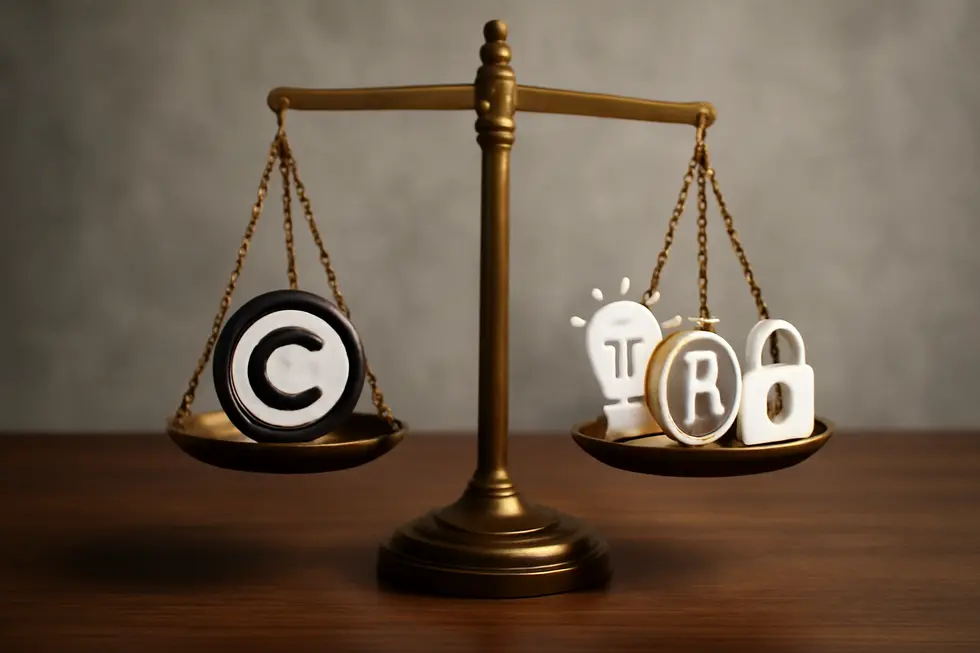
1. Navigating Technological Innovations and Economic Impact Across Copyrights and Other Intellectual Property Rights
Intellectual property (IP) operates at the intersection of technology and economics, shaping how creative and inventive endeavors are protected and monetized. Among the core IP categories—copyrights, patents, trademarks, and geographical indications—each interacts differently with technological advances and economic forces, yet together they create a dynamic framework fostering innovation and competitive markets.
Copyrights primarily secure original artistic and literary creations, such as music, software, and literature. Their scope has broadened as emerging technologies like artificial intelligence challenge traditional notions of authorship by autonomously generating content. Meanwhile, blockchain technology presents new opportunities to enhance the transparency and reliability of copyright management, offering secure systems for royalty distribution and rights enforcement in digital environments.
In contrast, patents focus on protecting inventions and technological breakthroughs, witnessing explosive growth in fields like AI, biotechnology, and green energy. Patents not only secure exclusivity but serve as valuable assets for companies pursuing monetization or market leverage. Trademarks safeguard brand identity, allowing businesses to establish trust and recognition, while geographical indications support sustainable regional economies by linking products to their origins, preserving cultural heritage, and promoting rural development.
Economically, IP rights incentivize creativity and research by granting creators exclusive commercial benefits, underpinning business growth and job creation. Data licensing within technology transfer frameworks exemplifies how IP facilitates market expansion and collaborative innovation, especially in sectors reliant on cutting-edge knowledge. In education technology and other fast-evolving industries, robust IP portfolios are critical for commanding acquisition premiums and defending market shares; weak protection risks commoditization and competitive erosion.
Overall, copyrights and other forms of IP contribute uniquely to the global innovation ecosystem. Their interaction with advancing technologies and economic strategies requires adaptable legal models and business practices to maximize the value derived from intellectual assets. Understanding these dimensions is essential to appreciating how intellectual property drives progress across creative, technological, and commercial realms.
For deeper insights on how copyrights align with economic principles and business considerations, consult this copyright definition in economics and business.
2. Global Dynamics and Societal Impact: How Intellectual Property Shapes and Challenges Copyrights and Other IP Rights
Intellectual property (IP), encompassing copyrights, patents, trademarks, and trade secrets, plays a pivotal role beyond legal protections, profoundly influencing geopolitical relations and societal structures worldwide. As nations vie for technological and creative dominance, IP rights have evolved into strategic assets central to economic competitiveness and national security. This dynamic is illustrated by the ongoing U.S.-China tensions, where AI innovations and their intellectual property are not only commercial commodities but also treated as critical security interests. Such geopolitical assertiveness extends to international trade frameworks, where IP regimes influence global market access and innovation flows. Disruptions or reforms in these systems, such as patent tax debates, risk destabilizing established economic hierarchies, with smaller innovators disproportionately affected.
Simultaneously, conflicts reshape IP landscapes, as seen in shifting patent filings and enforcement amid geopolitical crises, altering global innovation ecosystems. Cybersecurity threats compound these challenges, with state-backed cyberattacks targeting IP theft, highlighting the intersection between intellectual property protection and national security.
On the societal front, the balance between safeguarding creators’ rights and ensuring public access to knowledge often sparks debate. The “right to science” advocates for broader dissemination and use of scientific and creative works, sometimes clashing with stringent IP protections that favor private ownership. Future IP regulation scenarios envision a spectrum ranging from rigid traditional regimes to more open, collaborative innovation models addressing global issues like public health and climate change.
Within this context, copyrights face unique challenges tied to digital distribution and technological protection measures, which differ from the commercial and technological focus often seen in patents and trademarks. Enforcement mechanisms like digital rights management have implications beyond individual works, influencing internet governance and digital societies globally.
Understanding these intertwined geopolitical and societal forces is essential for navigating the complex realities governing how copyrights and other IP categories are created, protected, and challenged in today’s interconnected world. For creators seeking clarity on copyright’s role within the broader IP framework, exploring detailed insights on copyright law can provide valuable perspectives.
Final thoughts
Understanding the nuanced relationship between intellectual property and copyrights is essential for business owners looking to protect their creative assets effectively. Copyrights serve as a fundamental subset of intellectual property rights, providing exclusive control over original literary, artistic, and software works. By recognizing how copyrights fit into the broader IP framework, businesses can better evaluate which protections apply to their assets—from unique logos and inventions to confidential information and creative works. Equipped with this knowledge, business owners can leverage intellectual property law to safeguard valuable innovations, strengthen brand identity, and sustain competitive advantages in an increasingly knowledge-driven economy.
Your IP is the foundation of your success – let’s protect it together before it’s too late. We can’t wait to help you turn your ideas into legally secured assets.
About us
undefined
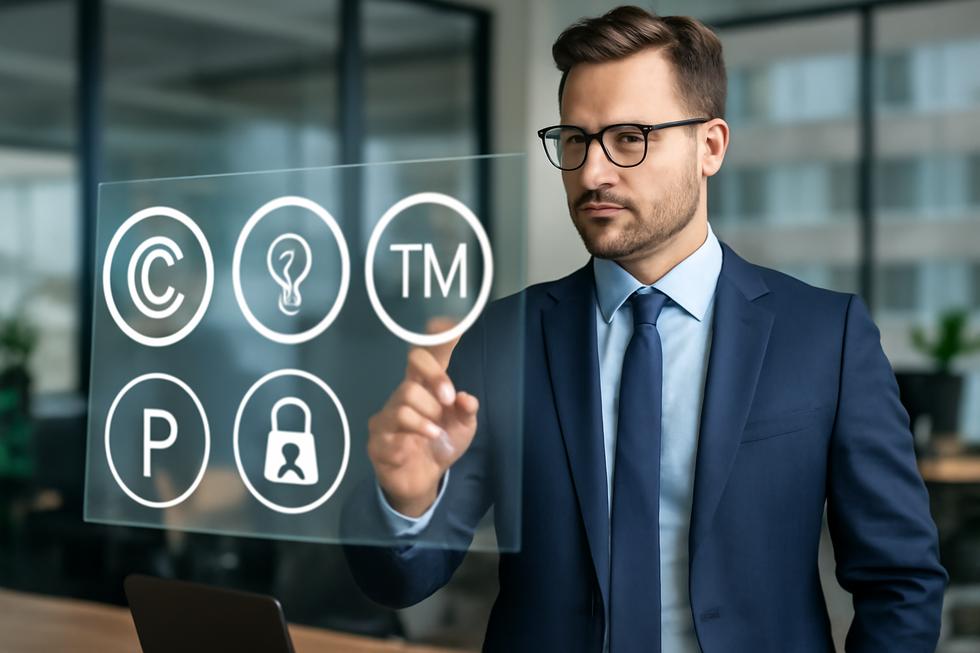


I don’t think the title of your article matches the content lol. Just kidding, mainly because I had some doubts after reading the article.